Open Weaver-Dunn (Modified)
The Weaver-Dunn procedure and modifications thereof have the best results for stabilisation of the AC Joint. The true Weaver-Dunn, described in 1972 [1], comprises excision of the lateral end of clavicle and tranfer of the coraco-acromial ligament (CAL). Modifications include the addition of a coraco-clavicular stabiliser, usually a screw or suture around the coracoid & clavicle.
The modified technique below, is that described by Copeland in 1995 [2].
1. A Longitudinal incision (strap) is made over the AC joint extending down over the coracoid. The lateral end of clavicle will be found to have ruptured the delto-trapezial fascia and possibly button-holed through trapezius.
.jpg)
Click for Animation
2. The lateral end of clavicle is excised, obliquely.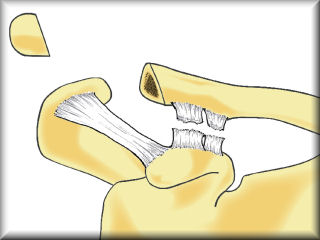
Click for Animation
3. The CAL is mobilised with a small amount of bone from the acromion.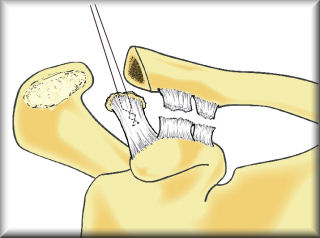
Click for Animation
4. Drill holes are made in the clavicle.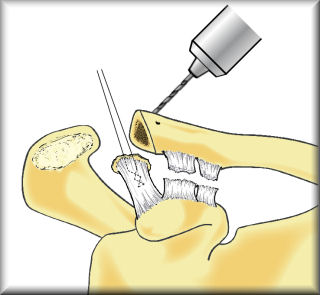
Click for Animation
5. A thick PDS cord is passed around the coracoid using a rotator cuff passer (Linvatec).
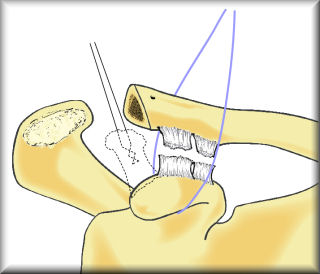
Click for Animation
6. The cord can be passed through a drill hole in the clavicle, to avoid excessive anterior translation of the clavicle.
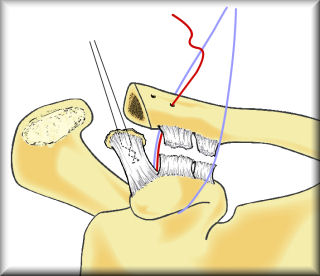
Click for Animation
7. The PDS cord is tied, whilst the clavicle is held down and the scapula pushed up - reducing the dislocation. The CAL is then transferred to the lateral end of clavicle with two interposing sutures.
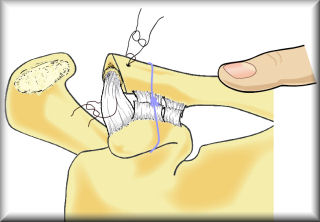
Click for Animation
8. When reducing the joint it is essential to ensure translation is anterior, as well as inferior.
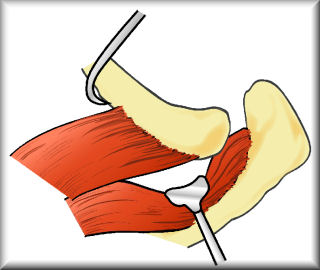
Click for Animation
References:
- JK Weaver and HK Dunn. Treatment of acromioclavicular injuries, especially complete acromioclavicular separations. JBJS Vol 54-A. p 1187. 1972.
- S Copeland. Operative shoulder surgery. New York: Churchill Livingstone; 1995.


